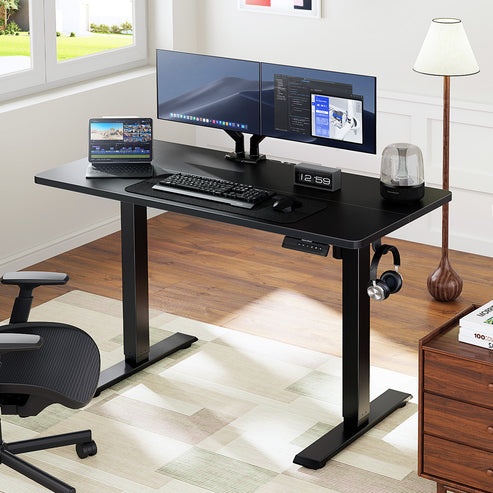In recent years, the standing desk has gained popularity as a solution to combat the negative effects of prolonged sitting. But what exactly are the health benefits associated with using a standing desk? This article delves into the advantages of incorporating a standing desk into your workspace and how it can significantly enhance your overall well-being.

Understanding the Standing Desk
A standing desk is designed to allow a person to stand comfortably while working. Many models are adjustable, enabling users to alternate between sitting and standing throughout the day. This flexibility can lead to improved posture and reduced discomfort. But how does this simple change impact your health?
1. Reduced Risk of Weight Gain and Obesity
One of the most significant benefits of using a standing desk is its potential to aid in weight management. Studies have shown that standing burns more calories than sitting. For instance, standing can burn approximately 50% more calories than sitting for the same duration. If you are looking to maintain or lose weight, incorporating a standing desk into your daily routine could be a beneficial strategy.
2. Lower Blood Sugar Levels
Prolonged sitting can lead to spikes in blood sugar levels, particularly after meals. By using a standing desk, you can help mitigate these spikes. Standing after meals can improve insulin sensitivity, which is crucial for maintaining healthy blood sugar levels. This is particularly important for individuals at risk of type 2 diabetes.
3. Improved Mood and Energy Levels
Have you ever noticed how your energy levels fluctuate throughout the day? Research suggests that using a standing desk can lead to increased feelings of energy and reduced fatigue. Many users report improved mood and productivity when they incorporate standing into their work routine. This can be attributed to increased circulation and reduced discomfort associated with prolonged sitting.
4. Enhanced Posture and Reduced Back Pain
Another compelling reason to consider a standing desk is its potential to improve posture. When used correctly, standing desks can encourage better spinal alignment and reduce the risk of developing chronic back pain. If you experience discomfort from sitting for long periods, transitioning to a standing desk may provide relief.
Tips for Transitioning to a Standing Desk
- Start slow: Begin by standing for 15-30 minutes at a time and gradually increase.
- Use an anti-fatigue mat to provide cushioning for your feet.
- Maintain a neutral wrist position while typing to avoid strain.
- Alternate between sitting and standing to find a comfortable balance.
For those interested in exploring various options, you can find a range of  that cater to different needs and preferences.
that cater to different needs and preferences.
Conclusion
Incorporating a standing desk into your workspace can yield numerous health benefits, from weight management to improved mood and posture. By making this simple adjustment, you can take significant steps toward enhancing your overall well-being. As you consider this transition, remember to listen to your body and find a balance that works for you.








